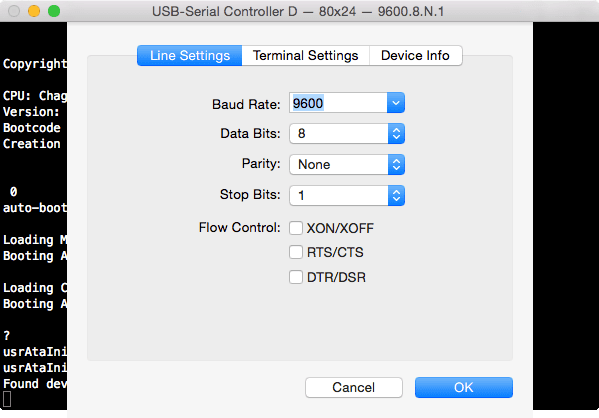

An INF file is required for windows, no driver is required for Mac or Linux. The backpack will appear as a "USB Serial Port" to Windows, Mac and Linux computers. USB is the easiest: simply plug a mini-B cable from the backpack to a computer to power and connect. There are two interfaces for transmitting data to the backpack: USB and Serial. Pick up one from the Adafruit shop today! USB or TTL Serial If you don't want to use the commands, you can just start sending ASCII to the LCD and it will magically appear as typed. We added a few extra commands for the RGB backlight and setting the LCD size. The command interface is compatible with the popular "Matrix Orbital" specifications so this backpack will work perfectly with computer applications or libraries that are expecting a "Matrix" LCD. Any customizations such as baud rate, backlight color, brightness, splash screen, etc. (The baud rate is flashed on the LCD during powerup).

For the TTL connection, the default baud rate is 9600 but you can send it a command to set the baud rate to 2400, 4800, 9600, 19200, 28800, or 57600 baud. For the USB connection, it will work at any baud rate. The backpack will automatically select data from whichever input is being used. The USB interface shows up as a COM/serial port on Windows/Mac/Linux. Inside the backpack is an USB-capable AT90USB162 chip that listens for commands both a mini-B USB port and a TTL serial input wire.

That means you can change the background color to anything you want - red, green, blue, pink, white, purple yellow, teal, salmon, chartreuse, or just leave it off for a neutral background. It can even handle our RGB backlight LCDs with full 8-bit PWM control of the backlight. Adding a character display to your project or computer has never been easier with the new Adafruit USB or TTL serial backpack! This custom-designed PCB sits on the back of any 'standard' character LCD (16x2 or 20x4 sized) and does everything you could want: printing text, automatic scrolling, setting the backlight, adjusting contrast, making custom characters, turning on and off the cursor, etc.


 0 kommentar(er)
0 kommentar(er)
